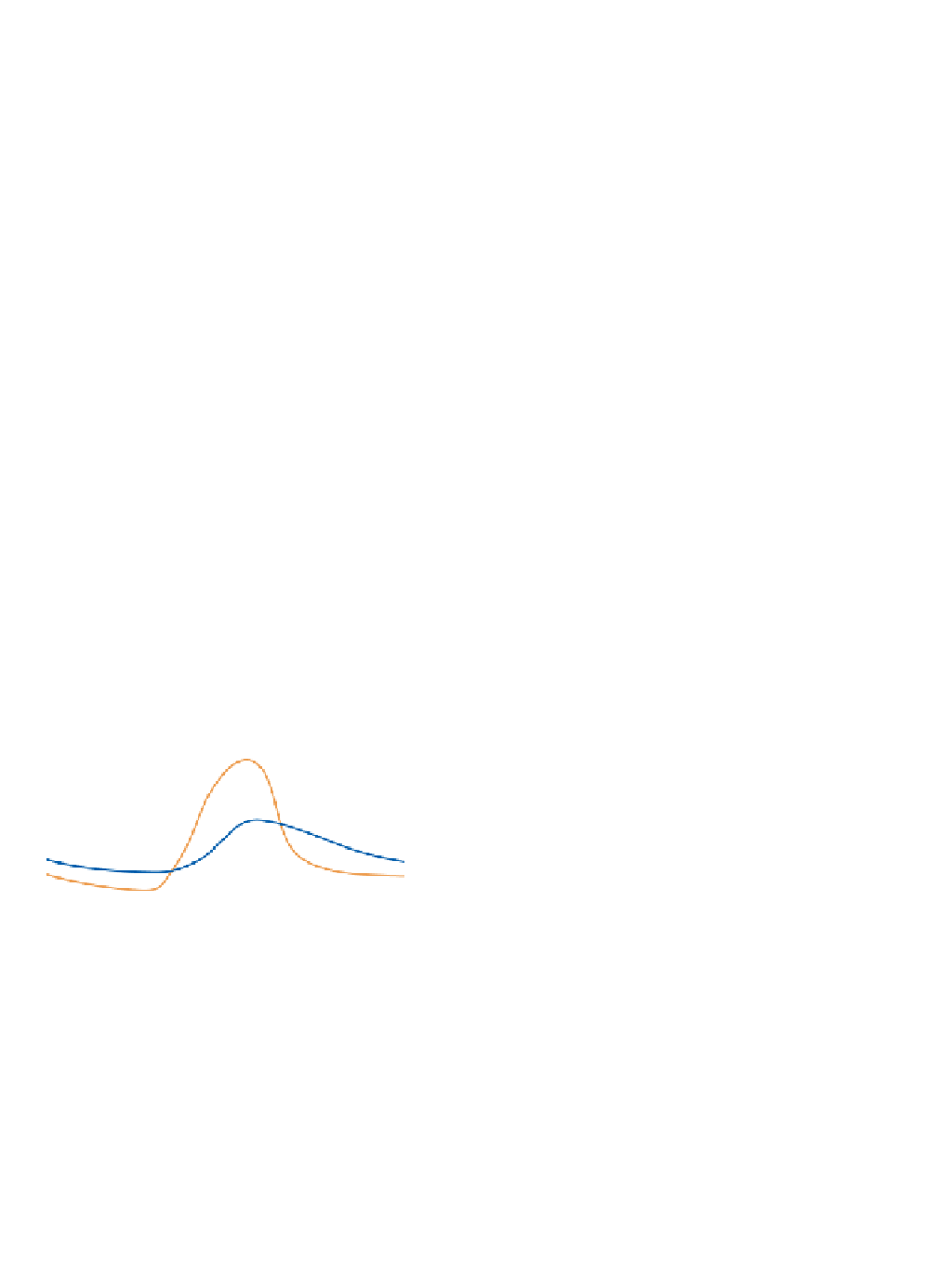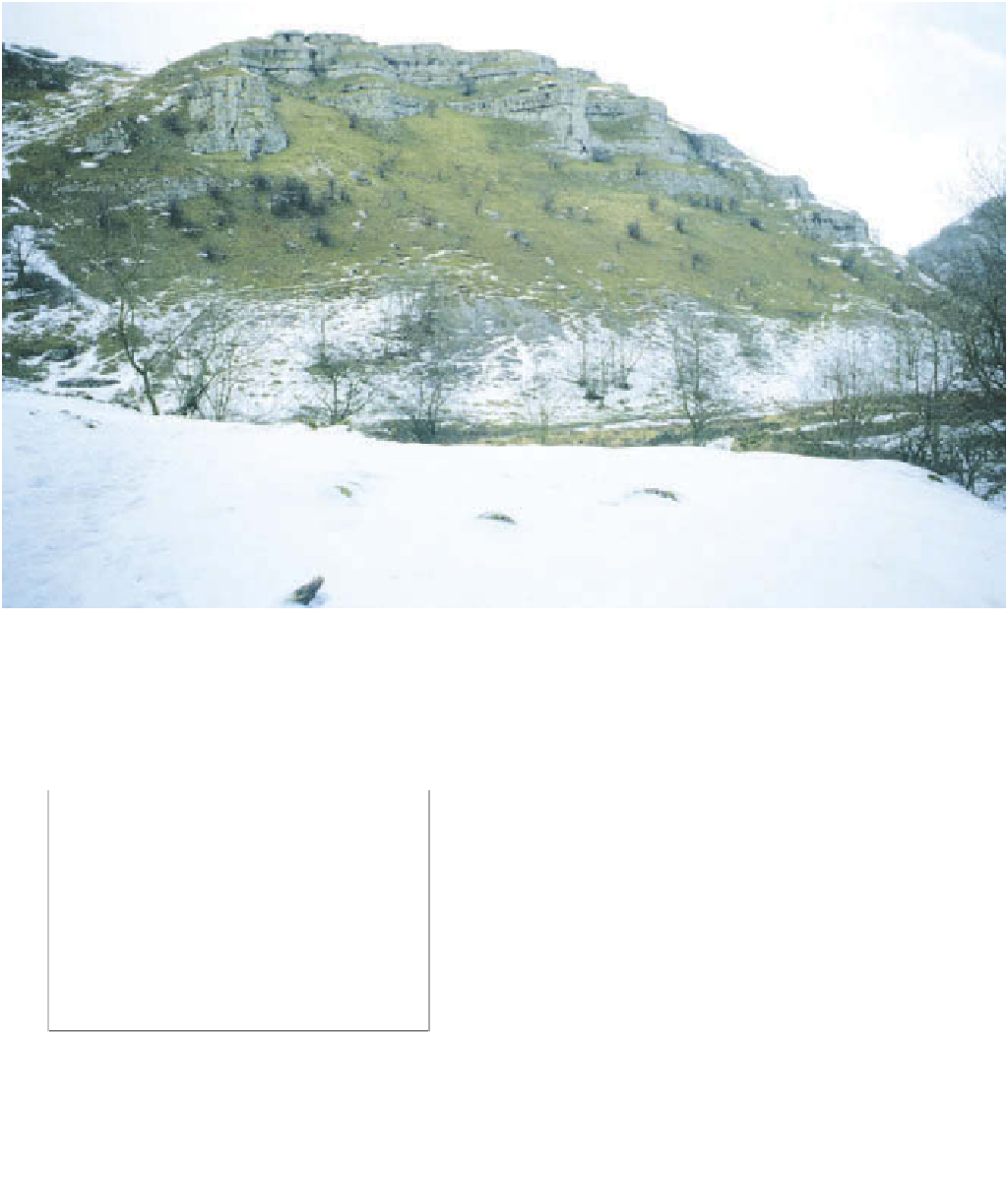Geoscience Reference
In-Depth Information
Plate 8.1
Aspect effects on snow survival. The south-facing slope has lost its snow through melting, apart from the area in
shadow at the base of the slope; the north-facing slope in the foreground is still deeply snow-covered.
Photo: Peter Smithson
Nature of heat transfer from the surface
During the day, the ground surface gets hotter through
absorbing the sun's energy and there is a positive radiation
balance. The layer of air in contact with the ground
becomes warm by conduction. If this were the only
mechanism of heat transfer, it would take a very long
time before even the lowest 1 m of air was warmed. The
daytime maximum temperature at that height would
not occur until about 9.00 p.m. Clearly this cannot be the
only process transferring heat, although it is the most
important in the lowest few millimetres, where tempera-
ture gradients are extreme. Above that level, the effect
of heating the air causes it to become buoyant through
being less dense than its surroundings, and so it rises,
carrying heat with it. Cooler air then moves in to take its
place. This air is heated in turn. Consequently we have
convection currents rapidly transferring heat to the cooler
layers of the lower atmosphere. If there is a strong wind
blowing, the mixing of heat is encouraged and the
temperature profile in the lower atmosphere becomes less
steep (
Figure 8.2
).
Dry soil
Moist soil
Sunrise
Sunset
6 a.m.
12 noon
6 p.m.
midnight
a moist soil.
large heat capacity of the water will prevent the soil
warming despite heat being conducted from the surface.
For most agricultural crops a balance is needed so that
soils warm up fairly quickly at depth and are neither too
wet nor too dry. This is achieved when the moisture
content of the soil is about 20 per cent.




















































